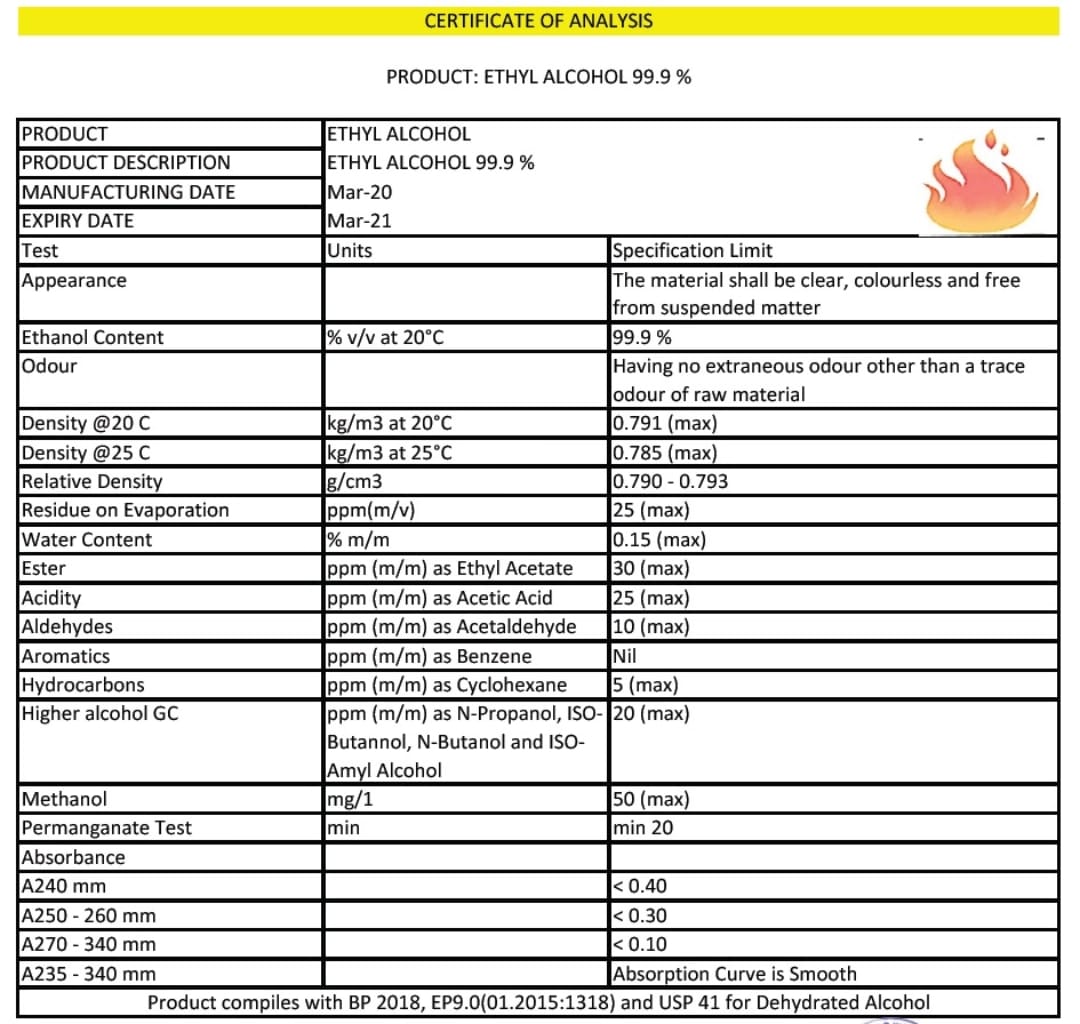Extra Neutral Alcohol – ENA 99.9% / Ethyl Alcohol 99.9% / Petroleum Grade Ethanol
Extra Neutral Alcohol (ENA) 99.9%, Ethyl Alcohol 99.9%, and Petroleum Grade Ethanol are all high-purity forms of ethanol, but they differ in their production processes, applications, and specifications. Here’s a detailed comparison:
1. Extra Neutral Alcohol (ENA) 99.9%
- Definition: ENA is a highly refined and neutral spirit with a purity of 99.9% ethanol by volume.
- Production: Produced through fermentation of molasses, grains, or other agricultural products, followed by multiple distillations and rectification to remove impurities.
- Characteristics:
- Neutral in taste and odor.
- Free from impurities like methanol, fusel oils, and aldehydes.
- Applications:
- Beverage Industry: Used in the production of premium vodka, gin, and other alcoholic beverages.
- Pharmaceuticals: Used as a solvent or base for medicinal preparations.
- Cosmetics: Used in perfumes, lotions, and sanitizers.
- Food Industry: Used as a flavoring agent or preservative.
2. Ethyl Alcohol 99.9%
- Definition: Ethyl Alcohol (ethanol) with a purity of 99.9%.
- Production: Can be produced through fermentation of sugars or synthetic processes like ethylene hydration.
- Characteristics:
- High purity with minimal impurities.
- Can be denatured (made unfit for human consumption) or non-denatured.
- Applications:
- Industrial Solvents: Used in paints, coatings, and cleaning products.
- Laboratory Use: Used as a reagent or solvent in chemical labs.
- Fuel: Used as a biofuel or fuel additive.
- Pharmaceuticals: Used in the production of drugs and sanitizers.
3. Petroleum Grade Ethanol
- Definition: Ethanol specifically produced for use in the petroleum industry.
- Production: Similar to ethyl alcohol, but often produced to meet stricter specifications for use in fuel blending.
- Characteristics:
- High purity (typically 99.9%).
- May contain denaturants to make it unfit for human consumption.
- Meets specific standards for use in fuel applications.
- Applications:
- Fuel Additive: Blended with gasoline to produce ethanol-blended fuels (e.g., E10, E85).
- Octane Booster: Improves the octane rating of gasoline.
- Industrial Use: Used in chemical synthesis and as a solvent.
Key Differences
| Parameter | ENA 99.9% | Ethyl Alcohol 99.9% | Petroleum Grade Ethanol |
|---|---|---|---|
| Purity | 99.9% ethanol | 99.9% ethanol | 99.9% ethanol |
| Production Process | Fermentation + multiple distillations | Fermentation or synthetic processes | Fermentation or synthetic processes |
| Taste/Odor | Neutral | Neutral (if non-denatured) | Denatured (unfit for consumption) |
| Primary Use | Beverages, pharmaceuticals, cosmetics | Industrial solvents, labs, fuel | Fuel blending, octane booster |
| Regulatory Standards | Food-grade standards | Varies (food-grade or industrial-grade) | Fuel-grade standards |
Summary
- ENA 99.9%: Highly refined ethanol used in beverages, pharmaceuticals, and cosmetics.
- Ethyl Alcohol 99.9%: Versatile ethanol used in industrial, laboratory, and fuel applications.
- Petroleum Grade Ethanol: Ethanol specifically produced for fuel blending and petroleum industry use.
While all three are 99.9% pure ethanol, their applications and standards differ based on the industry they serve.


